Summary, abstract and full texts n° 106
Philippe Mesnard and Yannis Thanassekos: Editorial: Sous le signe de la catastrophe ? (pdf in French)(pdf in Dutch)
Dossier: Faux Témoins [False Witnesses]
Coordinated by Jacques Walter
Jacques Walter: Des faux témoins à l’épreuve (pdf)
Alexandre Prstojevic: Faux en miroir : fiction du témoignage et sa réception (pdf)
- The article deals with the question of historical testimony and narrative fiction, on the basis of the following three texts: Yossel Rakover talks to God by Zvi Kolitz, The Painted Bird by Jerzy Kosinski and Fragments by Benjamin Wilkomirski.
A comparative reading of these three fictional texts, published at different times – 1946, 1965, 1996 – but which have all been read as authentic testimony on the Shoah, seems to suggest that they were accepted as authentic because they were plausible in three ways, biographically, historically and culturally.
The author concludes that the close interweaving of documentary and fiction around an authentic event illustrates the impossibility of determining whether a text is fact or fiction from its content. He shows that the identity of a work has many factors, especially when it is a fictional text dealing with historical events, because it is developed from two diametrically opposed starting points – the artistic imagination, with the full spectrum of its formal possibilities, and the unforeseeable reception of the text which depends both on its meaning and on the socio-political context in which it appears.
Bernard Dan: Yosl Rakover s’adresse à nous : vrai comme seule la fiction peut l’être (pdf)
- Yosl Rakover’s philosophical testament, is presented as a text that was purposely hidden and subsequently saved from the ruins of the ghetto of Warsaw, just as Emmanuel Ringelblum’s chronicle. Its opening reads like the last entry of a diary: "Warsaw, 28 April 1943. I, Yosl, son of David Rakover of Tarnopol, disciple of the Rabbi of Ger descendant of the righteous, the learned and the pious from Rakover and Maysel families, write these lines while the houses in the ghetto of Warsaw are ablaze and the one where I am has not been set on fire yet." Just like Job, the author addresses his God who fails to reply and he searches for a meaning in the tragedy that has slaughtered his people, his family and that will soon kill him too. The text entitled Yosl Rakover talks to God was first published in a Yiddish periodical in Buenos Aires in 1946, bearing the signature of Zvi Kolitz, who was a delegate at the World Zionist Congress and clandestine recruiter for the Irgun. Despite the writer’s signature attached to the original publication, the story spread around the world from the 1950s as though it were an authentic testimony. The power or scope of the text were not reduced following the late disclosure of the fictional nature of the "testimony" that had been commented with much enthusiasm by Thomas Mann and Emmanuel Lévinas, and still get reprinted in anthologies of texts on the Shoah and even in prayer books. How is this success to be understood? And how can one explain the striking contrast between the continuity of this success and the scandal that resulted from other disclosures (e.g. Misha: A Mémoire of the Holocaust Years / Survivre avec les Loups)? One avenue could be the absence of real historic pretense in a subjective narrative transformed into a reflexive (as opposed to descriptive) "testimony", which opens up reflection on how subjects alienated to their oppressor can recover a role within their own system of values.
- Enric Marco is an archetypal imposter. For 30 years, he projected an image based on his experiences in the concentration camps, until the historian Benito Bermejo proved that he had never been in either Flossenbürg or Mauthausen. In May 2005, reactions in the public arena were inevitable, owing to the celebrity which the false witness had acquired by representing the associations of parents of pupils in Catalonia (over 100 conferences a year), as president of the association of survivors of Mauthausen and other camps (the main association of camp prisoners) and bearer of the Cross of Saint Jordi – institutional recognition – but also, and above all, as the personification of the 10,000 Spanish Republicans deported to the Nazi camps. Discussion of the false witness, statements of opinion published in the daily press and the continuing association of Enric Marco with falsehood, amplified by the media, have continued to the present day.
- Arthur Conte relates his camp experience in Les Impitoyables. Trois nouvelles d’Allemagne [The Pitiless. Three stories from Germany] (1946). In one ("Neue Bremm or Jean-Pierre’s Notebook"), the former forced laborer makes use of a "hidden agenda", symptom of a form of guilt. This has its consequences for the position of the researcher with Gestapo archives at his disposal. The problem resurfaces with the novel Au-delà de la montagne [Beyond the Mountain] (1948) on the Spanish Civil War. Still in the person of Jean-Pierre, he transposes the story into another story whose hero is a member of the resistance, Manuel. This may provoke an accusation of false testimony, but not for long: the author’s history is well-known, and this is clearly a case of the reworking of testimony and literary material. The reflection from the short story makes it possible to untangle what is involved in a migration of fragments relating to the camp and the transformation, suppression or addition of factual or imagined details.
Aminata Niang, Sylvie Thiéblemont-Dollet: Entre fictions et témoignages autour du camp de Thiaroye. Une reconstruction d’un épisode de l’histoire coloniale française
- Following the 1944 mutiny by Senegalese soldiers in the camp of Thiaroye, its repression by the French army, and Ousmane Sembène’s 1988 film Camp de Thiaroye, a fictional re-telling of the dramatic event which was a huge success, a considerable amount of false testimony has circulated among the population of Senegal (including immigrants).
Julien Mary: 14-18, le bruit et la fureur, ou quand l’historien se fait témoin… (pdf)
- The docudrama 14-18, le bruit et la fureur [14-18, The Sound and the Fury], does not let the voices of the combatants be heard. Illustrated by "archive film" with color and sound added which give an essentially propaganda image of the 1914-18 war, the narrator’s words, those of an imaginary Tommy, are pasted onto a work created 80 years after the end of the war. Why opt for fictional testimony to explain a past which is rich in real testimony? What does this choice reveal about the issues underlying such a production?
Alpha Ousmane Barry: Faux témoignages de fidélité en Guinée. Allégeance au parti ou aliénation à Sékou Touré ?
- The testimony exhibits a variety of declaratory scenarios which, far from being sincere, simply demonstrate an effective manipulation. Behind the screen show validating his ideological allegiance, the subject betrays his conscience through a gesture of submission to the established order, with a view to protecting himself against an accusation of plotting. Thus the maneuver as a whole is aimed at mastering the mechanisms of psychological pressure specific to totalitarian regimes.
Other subjects
Michael Rothberg (interviewed by Fransiska Louwagie and Pieter Vermeulen): L’Holocauste et l’imagination comparative (pdf) – Original version: The Holocaust and the Comparative Imagination (pdf)
- This article, which deals essentially with the secret diary kept by Renata Laqueur while she was imprisoned in Bergen-Belsen, is structured round the motives which may lead a prisoner in a camp to write. How is the experience of the camp conveyed in the diary? Is it possible to identify strategies of writing, conscious or otherwise? Can social practices be correlated with these possible strategies? Do they provide information on the relation between the prisoner and her environment? Is the diary a literary achievement? By deciphering the purpose and components of the diary, the author examines the nature of what he considers to be an "act of communication".
- The Deustche Vortrupp. Gefolgschaft deutscher Juden, a German-Jewish organization, was founded in 1933 and officially dissolved in 1935. This study reveals its specific ideological profile, characterized by a marked commitment to the Jewish community of Germany and by manifestations of sympathy for the National Socialist movement. The author attributes the Deustche Vortrupp’s principal ideas to the organization’s overlapping involvement in different areas, such as the German Jewish community, the German youth movement and the "conservative revolution".
The journal is available on line at
openedition.org
All issues
-
No. 138 (04/2024) Trials
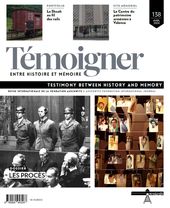
This dossier will deal with trials that have provided a legal answer to a demand for justice. Several cases will be addressed ranging from Istanbul and the Nuremberg Doctors' trial to the German policemen of the Brussels Jewish section and the gacaca trials in Rwanda.
Table of contents (Dutch version)
Table of contents (French version)No. 137 (10/2023) Children's Literature in Light of the Holocaust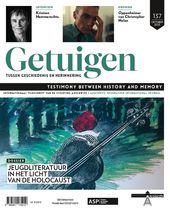
In France and Belgium, research into the relationship between children's literature and the Holocaust is rare, in contrast to the phenomenal attention in America (everyone knows Art Spiegelman's Maus) and in other English-speaking countries. Yet children's books depicting the Holocaust in words and pictures have been steadily gaining ground in post-war France and Belgium. While literary criticism and research still seem to be in their infancy, this dossier will show that critical analysis of this corpus is highly relevant for the future.
Table of contents (Dutch version)
Table of contents (French version)No. 136 (04/2023) The Executioners
The executioner has always fascinated and frightened. The perpetrators of mass crimes are those who carry out, facilitate or order the annihilation of a specific group. Issue 100 of Testimony: Between History and Memory, published in September 2008, examined the Nazi executioners. This dossier offers readers a historical and criminological approach to other genocides of the 20th century.
Table of contents (Dutch version)
Table of contents (French version)No. 135 (10/2022) Disobedience
This issue looks at the concept of disobedience in wartime. While the concept of civil disobedience may seem familiar in these times of endemic protest, there was a time when obedience was the rule. In a military context, disobedience was frequently followed by deadly consequences. This dossier focuses on three cases from the First World War and one from the Algerian War (1954-1962).
Table of contents (Dutch version)
Table of contents (French version)No. 134 (04/2022) The Killing of the ‘Useless’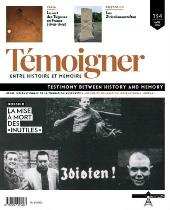
During the Second World War, the Nazi regime didn't just try to destroy the Jewish "race", which it considered dangerous. Before implementing the Final Solution, the Nazis massacred those who didn't fit in with their eugenic racial ideology and whom they considered inferior. In this dossier, we focus on the mentally and physically handicapped, systematic victims of Nazi pseudo-medical madness throughout the world conflict.
Table of contents (Dutch version)
Table of contents (French version)No. 133 (10/2021) 1918-1938: The politicisation of music in Europe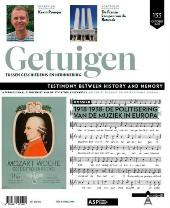
1918-1938: The politicisation of music in Europe
This dossier looks at the instrumentalisation of music by the political world between the wars. The cases are numerous and shed light on the way in which political propaganda was propagated in European musical culture.
Table of contents (Dutch version)
Table of contents (French version)No. 132 (04/2021) AKTION REINHARDT and AKTION ERNTEFEST
AKTION REINHARDT and AKTION ERNTEFEST
The Aktion Reinhardt saw approximately 1.8 million Polish Jews perish in the gas chambers of Bełżec, Sobibór, Treblinka and Majdanek between March 1942 and November 1943. The Jews who ‘escaped’ the gas chambers were shot in Majdanek, Trawniki and Poniatowa on 3 and 4 November 1943 during Aktion Erntefest. The dossier we are proposing takes stock of current research on the Aktion Reinhardt. This historical event has experienced a resurgence of interest among historians of the Shoah over the last fifteen years, thanks, among other things, to archaeological advances at the various sites concerned. We have come a long way since Yithzak Arad's pioneering work in 1987: Belzec, Sobibor, Treblinka: the Operation Reinhard Death Camps. The dossier highlights different perspectives to discuss current research related to the issue. It addresses the erasure of traces, the sociological perspectives of the executioners, the excavation of extermination sites and the most recent historiography.
Table of contents and abstracts (Dutch version)
Table of contents and abstracts (French version)No. 131 (10/2020) Historiography of the Second World War in the Far East
Historiography of the Second World War in the Far East
For many people, 8 May 1945 and the surrender of Nazi Germany is the final chapter of the Second World War. However, it is often forgotten that the months between May and September 1945 were decisive for the future of the world, as fierce fighting continued in the Pacific between the United States and the Japanese Empire until the latter’s unconditional surrender on 2 September 1945, the actual date of the end of the Second World War.Table of contents and abstracts (Dutch version)
Table of contents and abstracts (French version)No. 130 (04/2020) Reception of the Shoah and mentalities in Jewish and Christian circles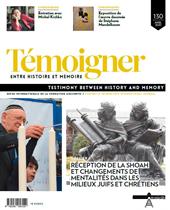
Reception of the Shoah and mentalities in Jewish and Christian circles
The reception of the Shoah has become, for all of humanity, a place of questioning and awareness. This dossier will aim to establish and evaluate the modalities and challenges of the transmission of the Shoah and to measure the resulting changes in identities and mentalities. What were the Catholic views on Judaism before and during the Shoah? What Jewish liturgies and interreligious rites exist for the commemoration of the Shoah in Israel and the United States? The evolution of mentalities in the Jewish world in relation to the Shoah will also be exposed through the analysis of the so-called Bitburg controversy, triggered by the visit of the American President, Ronald Reagan, to the German military cemetery of Bitburg (FRG) in May 1985. The Auschwitz Carmel affair (1985-1993) finally reveals the involvement of the Belgian and French Churches in the resolution of the conflict and is undoubtedly a key stage in the Church's 'teaching of esteem' with regard to the Jews. The historical answers provided in this dossier to the question of the Shoah may be decisive for the survival of Judaism and the relationship between Judaism and Christianity.
Table of contents and abstracts (Dutch version)
Table of contents and abstracts (French version)No. 129 (10/2019) Recognition of victims
Recognition of victims
In recent decades, the idea has gained ground that victims of mass crimes deserve recognition. This has become an essential category of our memorial culture. This dossier aims to take stock of this issue by looking at the broad spectrum of measures to ensure recognition, from simple remembrance to targeted judicial interventions, and by recalling the growing importance of the victim in international criminal justice. It returns to the problematic aspects of recognition when it leads to competition among victims.
Table of contents and abstracts (Dutch version)
Table of contents and abstracts (French version)No. 128 (04/2019) 25 years on, how to remember the Tutsi genocide
Kwibuka [Remember]. 25 years on, how to remember the Tutsi genocide
April 1994. Images of mutilated bodies are projected on European screens, originating from Rwanda. 25 years later, we remember.Table of contents and abstracts (Dutch version)
Table of contents and abstracts (French version)No. 127 (10/2018) Perpetuation of violence after 1918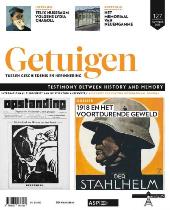
Perpetuation of violence after 1918
One hundred years ago, the First World War ended in November 1918. After four years of bloodshed, peace returns to Europe. At least, that was the impression of the victors at the time, and today it is also the impression of the commemorators who celebrate its centenary. The historical reality is more complex. At least until 1923, violence continued in the form of revolutions and counter-revolutions, wars and civil wars. The spirits also remain in the grip of violence on both the left and the right. The dossier proposes to define the contours of this Europe so strongly marked by the Great War, by evoking the culture of violence established by it and which, finally, degenerated into the total explosion of the Second World War.
No. 126 (04/2018) Questions about the future of remembrance work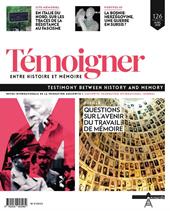
Questions about the future of remembrance work
On 20 and 21 January 2017, the seminar ‘Questions on the future of remembrance work’ was held in Esch-sur-Alzette, Grand Duchy of Luxembourg. The five articles in this dossier taken from the conference proceedings attempt to answer the following questions: How can we build a critical memory of the Shoah, free of myths and national fragmentation? How do we anticipate the absence of direct witnesses? In the future, who transmits what, and how?
No. 125 (10/2017) Persecution of homosexuals by the Nazis
Persecution of homosexuals by the Nazis
Historical knowledge of the Nazi persecution of homosexuals and their deportation has made significant progress in recent years due to the increase in research on the subject. In this dossier, recognised researchers as well as young doctoral and PhD students take the floor. The insights they provide concern both the question of the singular destiny of homosexual men and women during the Second World War and the way in which the memory of the homosexual victims of Nazism has evolved since the end of that war.
No. 124 (04/2017) Music in the camps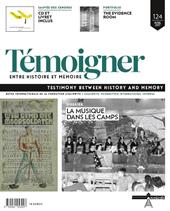
Music in the camps
Music was an integral part of the concentration camp world, Nazi and otherwise. What kind of music was composed and performed, and what exactly was its role in the camps? A factor of survival and resistance for the prisoners, a way for them to express their hope and their humanity - or, on the contrary, an instrument of oppression exploited by the executioners? What is the function of music in the work of memory following the experience of extreme violence and suffering? This dossier proposes to explore these issues.
No. 123 (10/2016) Translating Memory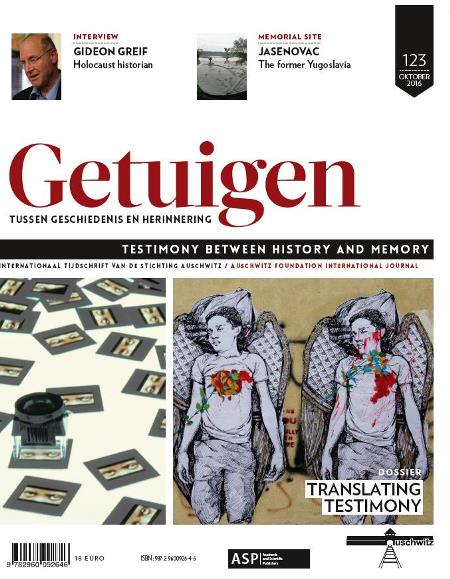
Translating Memory
Presentation of the dossier: What is the relationship between testimony, defined as a more or less ritualized firstperson account of political violence, and translation? Correspondingly, how does the translator position herself towards the witness? Can the translator be, or become, a witness? How, when and why are testimonies translated? Which linguistic and discursive strategies do translators resort to when faced with ethically challenging texts? Which role do they play exactly in the transmission of the historical knowledge, cultural values or social critique conveyed by the testimony? Does translation weaken or rather reinforce the relevance and impact of the original statement? How important is translation in literary, political and institutional settings? Do these specific settings determine translation practice in significant ways? To which extent can subsequent processes of transcription, editing, translation and archiving affect the source text? And how accurate are the boundaries we draw to distinguish witnessing from translating, documentary from literary testimony, the original from its translation? These are the main questions we intend to explore in our dossier.
No. 122 (04/2016) Revisionism and negationism
Revisionism and negationism
Strictly speaking, Holocaust denial is the ‘doctrine denying the reality of the Nazi genocide of the Jews, including the existence of the gas chambers’; by extension, the term refers to the denial of other genocides and crimes against humanity. The literature on Holocaust denial is extensive. There are studies on the subject in many countries as well as biographies of deniers. The argumentative and rhetorical strategies of the deniers have been widely deciphered. Websites systematically dismantle their fallacies. While there is no shortage of reliable information on the phenomenon, it is essential to return to it again and again, for several reasons.
No. 121 (10/2015) Extreme violence on stage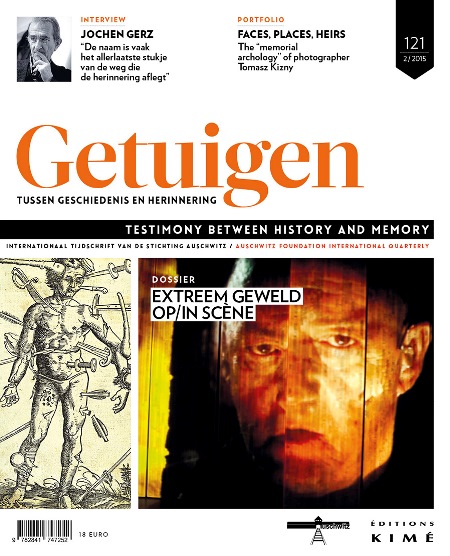
Extreme violence on stage
Extreme violence shows itself. It bursts through the screens. It surfs from one style and medium to another: news reports, documentaries, fiction, arts of all kinds. Yet theatre distinguishes itself from this mêlée all while constantly returning to the subject. Differently. Linked from its origins to the representation of cruelty and having “miraculously” escaped the often sterile polemics on the interdiction (or not)... of representing the Holocaust, it is still with the same youthfulness that theatre deals with extreme violence today, relentlessly pursuing the articulation of ethics and aesthetics.
No. 120 (04/2015) What future is there for the memory of the Armenian genocide?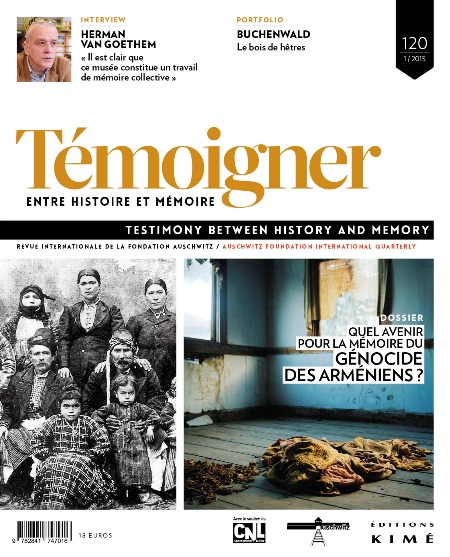
What future is there for the memory of the Armenian genocide?
The 1915 genocide of Turkish Armenians still stirs up numerous debates, controversies, declarations of principle, statements and counter-statements, and even negation. However, as we speak, ties are being established more and more openly, bridges are built and bonds strengthened between the Armenian and Turkish communities. Is reconciliation possible?
No. 119 (12/2014) 70 years ago, Auschwitz. Looking back on Primo Levi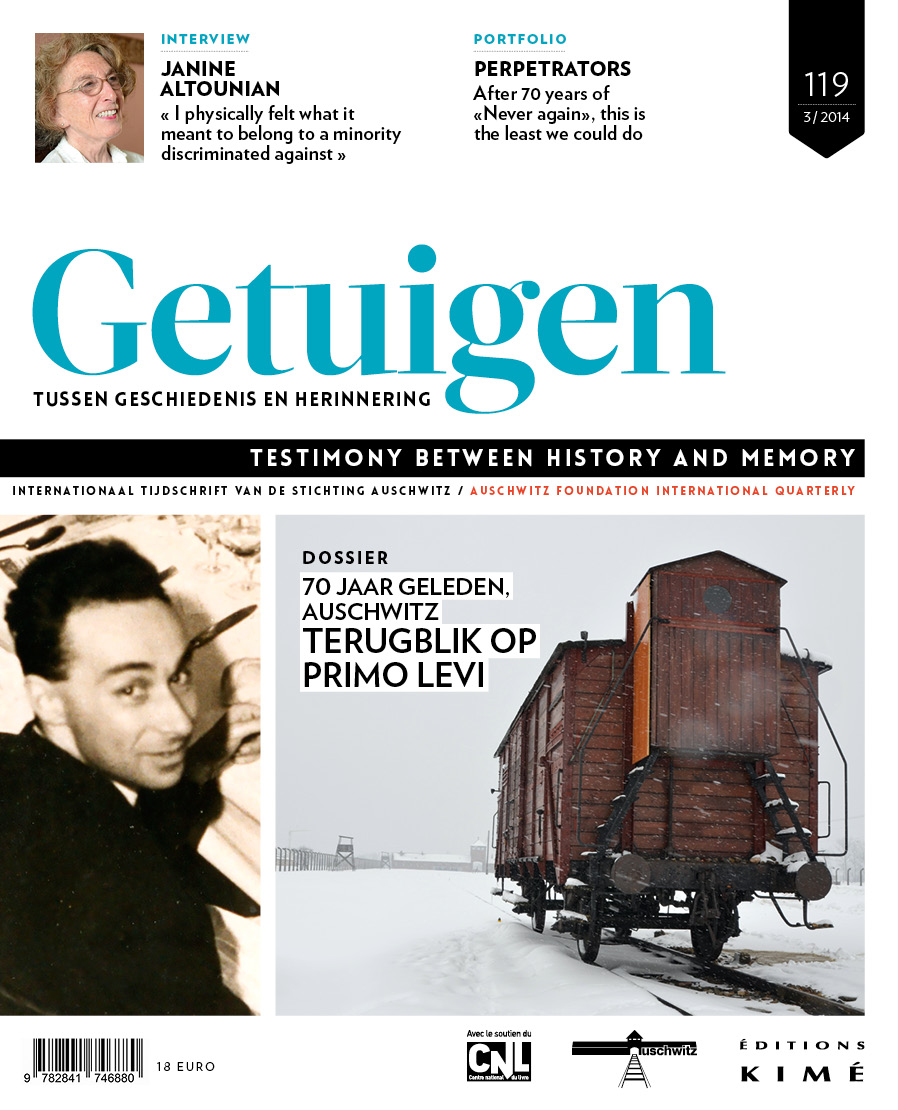
70 years ago, Auschwitz. Looking back on Primo Levi
27 January 1945. Seventy years ago the first soldiers of the Red Army marched into Auschwitz. One might argue that the camp was “liberated” then, but the truth is that neither Auschwitz, nor any of the other Nazi camps, was ever a priority to the Allied Powers. Primo Levi was one of the few survivors who knew how to hide and escape the enforced evacuation of the camps. With this dossier, we want to cast light on the complex figure that Levi was: a Jew, a deportee, a chemists, a witness, and a writer. It sets out to study his oeuvre and his interpretation of the notions of “resistance” and “engagement”, in order to understand how he eventually became a “professional survivor”, as he once described himself.
No. 118 (09/2014) Dictatorship and terror in Argentina, Chile and Uruguay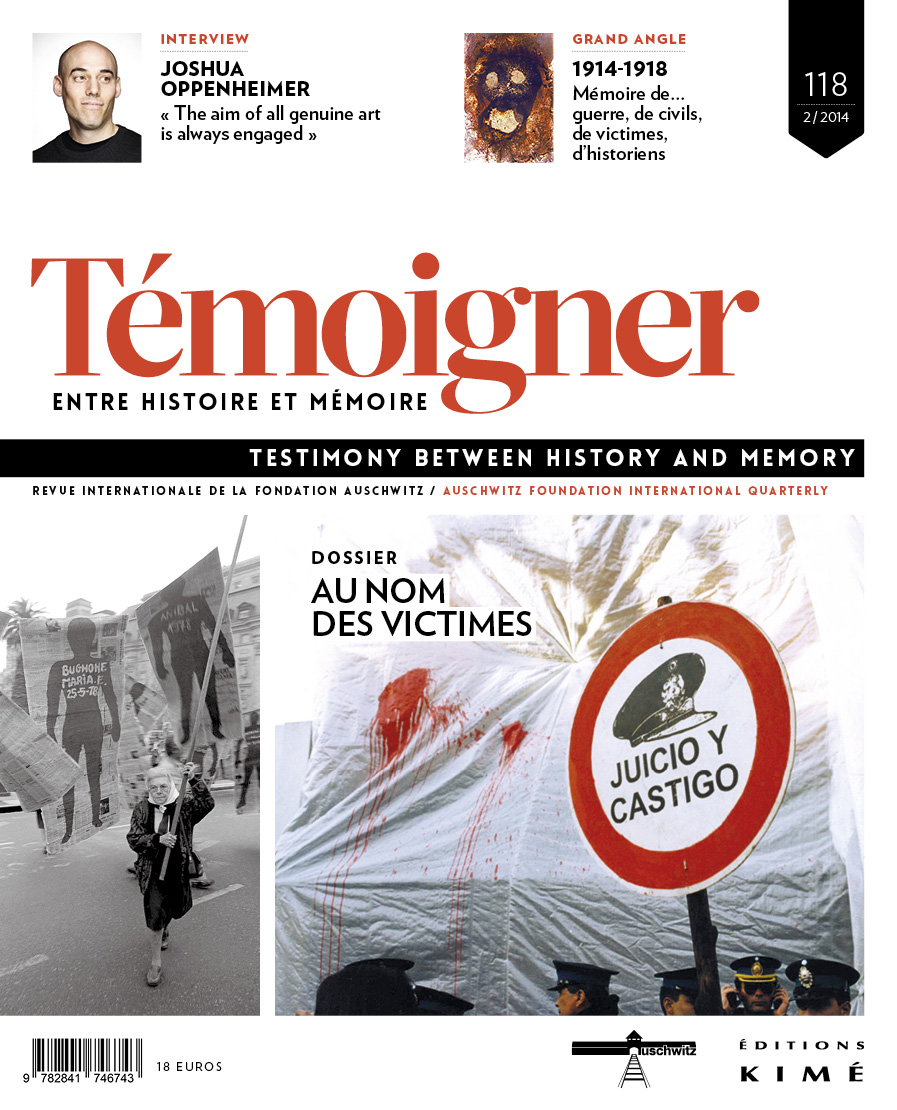
In the name of the victims. Dictatorship and State terror in Argentina, Chile and Uruguay
During the 1970s and 1980s, Argentina, Chile and Uruguay were in the grip of military dictatorships. The process of democratic transition that followed the long period of state terror involved the construction of particular narratives and memories, leading to a reconfiguration of the past. Despite local differences, this process is very much centered at the figure of the victim – a figure the articles in this dossier, collected by Claudia Feld, Luciana Messina and Nadia Tahir, set out to explore.
No. 117 (03/2014) Friends? Enemies? Relationships between memoriesAmis ? Ennemis ? Relations entre mémoires / Vriend of vijand? Hoe herinneringen zich tot elkaar verhouden [Friends? Enemies? Relationships between memories]
Much has been said and written about group memories, limiting their mutual relationships and history to conflicts, “wars”, competitions, or strategies for eclipsing or silencing. These terms have now become the platitudes of a kind of more general doxa about collective and cultural remembrance. This dossier proposes a critical reading of those terms and of that doxa by questioning the emergence, constitution, and inter-relating of different exemplary memories of the major violent episodes of the 20th century. It will address the relationships that those memories can maintain with other memories with which they share, if not the same event, at least similar characteristics and concerns.
No. 116 (09/2013) Memory tripsVoyages mémoriels / Herdenkingsreizen [Memory trips]
Should we fear what has been grouped under the term “memorial tourism”? Or should we take this as a reality of our time? Can any visitor, group or individual, nowadays be absorbed in the category of “tourist”? Or is this category a remote intellectual reduction of a personal experience that everyone is aiming during his visit? The problem appears in a somewhat different light when we think of tours for young people supervised by adults, usually teachers. This dossier gives the floor to historians and teachers with experience in the field.
No. 115 (03/2013) Memory construction in SpainL’Espagne en construction mémorielle / Spanje en de opbouw van de gedachtenis [Memory construction in Spain]
This dossier’s objective is to provide a benchmark for understanding the plural identities and relationships between memories and representation forms in contemporary Spain. Indeed, it is necessary today to take a fresh look not only on the stratified memories of the civil war, exile and the Franco repression, but also on the reception of other memories such as that of the Holocaust, and to propose new readings. We propose to highlight the conflicting or fruitful tensions between official actions, initiatives of associations and of artistic events.
No. 114 (12/2012) Memorial SitesSites mémoriels / Gedenkplaatsen [Memorial Sites]
Memorial sites constitute the concrete trace of European remembrance and history of the twentieth century. But what do they look like today? Exhibition and conservation criteria have changed during the last ten to fifteen years, like advances in historical research have changed the way we read and reconstruct past events. This is not only due to the fact that we have moved from a past history written by witnesses to a history written by professional historians. A new consciousness has emerged concerning transmission methods (memory education), and archeology has strengthened historical research. We tore off the veil of ideology that often influenced and prescribed the way we imagined permanent exhibitions, conservation and visits. Can we say we have entered a new era in memory transmission? It remains, in many ways, an open bet on the present and the future.
No. 113 (09/2012) The Taboos of German HistoryLes tabous de l'histoire allemande / De taboes van de Duitse geschiedenis The Taboos of German History]
The most painful or ambiguous periods in twentieth-century German history are characterized by numerous taboos, expressed in literature, photography and film as so many “returns of the repressed”. These studies focus in part on problems of antisemitism, and thus on the relationship of German-speaking societies to the Shoah. They also examine the way in which those societies confronted the violence they suffered, such as bombing, fleeing from the Red Army and the expulsions, and mass rapes.
No. 112 (06/2012) Children of the Spanish Civil WarLes enfants de la Guerre d'Espagne. Expériences et représentations culturelles / De kinderen van de Spaanse Burgeroorlog. Ervaringen en culturele voorstellingen [Children of the Spanish Civil War: Experiences and Cultural Representations]
The dossier in this issue deals with the experiences and cultural representations of childhood during the Spanish Civil War. It aims to help towards a better understanding of that conflict, which tore apart a population living on the same territory, by confronting the experiences of Spanish children who lived through it – as expressed in various forms during or after the war – with representations of those same children, particularly those coming from adults.
No. 111 (12/ 2011) Dangerous Game between Art and PropagandaArt & propagande : jeux inter-dits / Gevaarlijk spel tussen kunst en propaganda [Dangerous Game between Art and Propaganda]
Since the media came into existence, political institutions from political parties to governments have used them to promote their image, in order to win the support of the public they addressed. Authoritarian powers use the media as a means of consolidating their domination. But how can artists take part in propaganda, whose purposes are the opposite of those generally attributed to art? Does that mean setting aside their vocation, or do they themselves distort that vocation?
No. 110 (10/2011) Displacements, Deportations, ExileDéplacements, déportations, exils / Volksverhuizingen, deportaties, verbanningen [Displacements, Deportations, Exile]
States and criminal groups exploit population displacements to isolate or get rid of certain populations. In addition to being denied their normal rights, these populations lose visibility and are deprived of their reference points and social frameworks. In this way it is possible to make them the victims of constraints (deterritorialization, forced labor…) or violence (famine, massacres genocide…). These developments have spread on an unprecedented scale since the First World War and continue to grow worldwide. But there is also a dimension of remembrance to this reality: memories of these displacements are now being expressed in literature, and in exhibitions and museums. This dossier examines the contemporary double aspect of history and memory.
No. 109 (03/ 2011) 20th Century Wars and Genocides in Graphic Novels and Comic StripsLa bande dessinée dans l'orbe des guerres et des génocides du XXe siècle / Twintigste-eeuwse oorlogen en genociden in het stripverhaal [Twentieth Century Wars and Genocides as Portrayed in Graphic Novels and Comic Strips]
No. 108 (09/2010) How Documentaries Handle HistoryLe traitement de l'histoire dans les documentaires filmiques / De behandeling van de geschiedenis in de documentaire film [How Documentaries Handle History]
No. 104 (09/2009) Anti-fascism Revisited: History, Ideology, RemembranceL'Antifascisme revisité. Histoire – Idéologie – Mémoire / Nogmaals antifascisme. Geschiedenis, ideologie, gedachtenis [Anti-fascism Revisited: History, Ideology, Remembrance]
No. 103 (06/ 2009) Nazi Crimes and Genocides on the ScreenCrimes et génocides nazis à l'écran / Nazimisdaden en genociden op het scherm [Nazi Crimes and Genocides on the Screen]
No. 102 (03/ 2009) The Portrayal of Political Criminals in Films, Plays, Literature...Criminels politiques en représentation. Arts, cinéma, théâtre, littérature, médias / De representatie van politieke misdadigers. Kunst, film, theater, literatuur, media [The Portrayal of Political Criminals in Films and Plays, in Literature and in the Media]
No. 101 (12/2008) How to Educate, How to Remember?Quelle pédagogie, pour quelle(s) mémoire(s) ? / Welke pedagogie, voor welke herinnering(en)? [How to Educate, How to Remember?]
No. 100 (09/2008) Questions about the “Executioners”Questions de « bourreaux » / De kwestie van de “beul” [Questions about the “Executioners”]
Contact
Auschwitz Foundation – Remembrance of Auschwitz
Rue aux Laines 17 box 50 – B-1000 Brussels +32 (0)2 512 79 98
+32 (0)2 512 79 98 info@auschwitz.be
info@auschwitz.be
BCE/KBO Auschwitz Foundation: 0876787354
BCE/KBO Remembrance of Auschwitz: 0420667323
Office open from Monday to Friday 9:30am to 4:30pm.
Visit only by appointment.![]()
![]()
![]()
![]()
Become a member
To become a member of Remembrance of Auschwitz ASBL, take part in its activities and support its actions, please contact us.
Membership costs €40.00, payable to account n° 310-0780517-44 (IBAN : BE55 3100 7805 1744 – BIC : BBRUBEBB)
Donations of more than €40.00 qualify for a tax exemption for Belgian tax-payers.








































